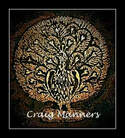|
By Eric Metaxas
Next month we'll observe Religious Freedom Day. And I want to help you and your public school get ready. Right up there with Christmas music on the radio and festive lights on people’s houses, it's become an annual tradition during the Christmas season for people to criticize schools for daring to display Christmas trees, sing Christmas carols, and acknowledge the birth of Jesus. And of course, a lot of schools avoid the controversy all together because they have long ago stripped Christmas of its meaning and even stopped children from talking about Jesus as the reason for the season. As Eric Buehrer of Gateways to Better Education reminds us, when it comes to education, as the saying goes, “More is caught than taught.” The tone or atmosphere in a classroom can have a great impact on students. When a generation of young people is raised in public schools where they aren’t allowed to freely express their faith, is it any wonder they become adults who think that religious expression should only be a private affair in their homes or churches? This generation of children and teens need to be taught that they have the freedom to express their faith at school. Faith isn’t just a private matter that can only be expressed in the evenings and on weekends. Americans are free to articulate their faith in their words and by their actions in all areas of their lives. That's why it is important that we all draw attention to Religious Freedom Day, January 16th. Each year since 1993, the President declares January 16th to be “Religious Freedom Day” and calls upon Americans to “observe this day through appropriate events and activities in homes, schools, and places of worship.” January 16th is the anniversary of the passage, in 1786, of the Virginia Statute on Religious Freedom. Thomas Jefferson drafted the legislation and considered it one of his greatest achievements. The men who drafted the U.S. Constitution leaned heavily on Jefferson’s statute in establishing the First Amendment’s guarantee of religious freedom. Today, that protection is as important as ever--whether it involves Obamacare trying to make religious organizations pay for abortions or judges forcing bakers, florists, and photographers to participate in same-sex weddings. When it comes to public schools, in too many instances, teachers tell students they cannot include their faith in their homework assignments or classroom discussions. These teachers are often simply unaware that the U.S. Department of Education has issued guidelines explaining students’ religious liberties. According to the guidelines:
Our friends at Gateways to Better Education have put together all the resources you need to promote awareness of Religious Freedom Day in your church, your schools, and your community this January. Their mission is to create a better future for our children by keeping God in our schools. And that includes promoting students’ freedom of religious expression. So, here’s the plan: On the Sundays before and after Religious Freedom Day I urge you to get information to the families in your church about their children’s religious freedom at school. Make sure all the educators in your church get it, too. You can find the link to Gateways to Better Education’s resources at www.breakpoint.org. Source
0 Comments
Your comment will be posted after it is approved.
Leave a Reply. |
Craig MannersWhile much of what is written in this Blog may currently appear to be counter-cultural, given our post-truth culture, it is in no way counter-human beings. I am always for people no matter what they think, do, or may have done in their past. Where I put forward ideas or debate against certain ideology, behaviour, ideas, movements, politics, I remain very much on the side of the human beings even though I may be opposed to their worldview, behaviour and politics. Such opposition is generally out of concern for the ultimate consequences of such behaviour or ideas, especially for children. |
- Africa
- Reflections by Craig Manners
-
Articles by Craig Manners
- While We Wait by Craig Manners
- Written on our Hearts by Craig Manners
- Cure for Death by Craig Manners
- Perfect Justice, Perfect Mercy. Only God Could do This. By Craig Manners
- Authority By Craig Manners
- Creation and Providence by Craig Manners
- Forgiveness by Craig Manners
- All Things for Good by Craig Manners
- A Complete Education by Craig Manners
- Humans. Moral beings or not?
- Soviet Era Mass Conversion Therapy Mind Control Set to Control the West by Craig Manners
- On the Road to Adelong by Craig Manners >
- What is Christianity all about? >
- Note Pad
- To be Frank!
- A Cultural Revolution
- Wanted: Men who Understand the Times
- Grieved by the Grievance Virus
Contact Craig Manners
Copyright Craig Manners © 2016 to 2019
